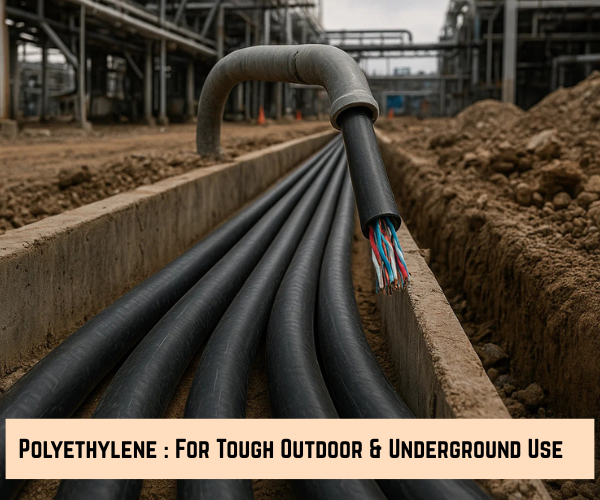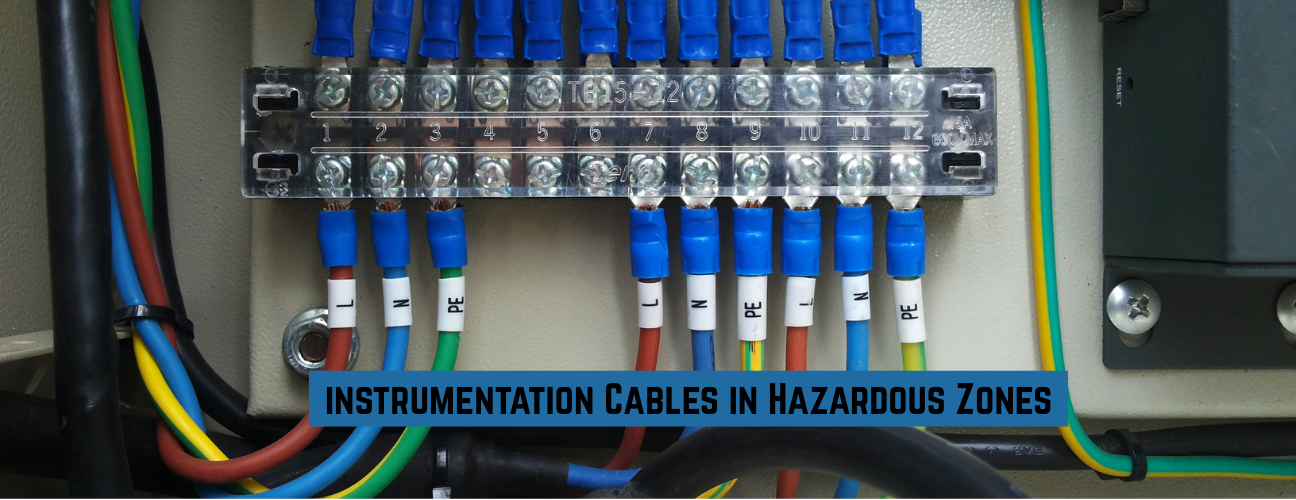Table of Contents
In hazardous environments such as petrochemical plants, oil rigs, mining operations and refineries, electrical infrastructure must meet the highest standards of safety and reliability. Among the most critical components of these systems are Instrumentation Cables, which play a vital role in transmitting signals from sensors and instruments to control units. These cables are tasked with maintaining data integrity while withstanding environmental hazards like chemical exposure, flame risk, moisture ingress, mechanical abrasion and electromagnetic interference.
While the core function of Instrumentation Cable Wire revolves around signal transmission, the protective outer sheath is what determines its resilience in hazardous zones. An improperly selected sheath may compromise the safety of the entire system. Hence, selecting the right sheathing material is not merely a technical preference – it is an operational necessity.
Let’s explore the best sheathing options for Copper or Screened Instrumentation Cables and other Cables and how these layers enhance performance in dangerous industrial zones.
The Role of Sheathing in Instrumentation Cables
The sheath of an instrumentation cable serves multiple functions. It acts as a barrier against external elements like moisture, chemicals, UV radiation and flames. It also offers physical protection against abrasion, mechanical impact and pressure. Additionally, the sheath plays a part in electromagnetic shielding, particularly when integrated with Screened Instrumentation Cables.
In hazardous zones, sheathing must meet stringent standards related to flame retardancy, halogen emission, smoke density and chemical inertness. The sheath should maintain structural integrity under extreme temperatures and resist propagation of fire in case of ignition.
The choice of sheathing impacts:
- Environmental resistance (moisture, chemicals, sunlight)
- Mechanical protection (abrasion, cuts, crushing)
- Electrical performance (insulation, signal integrity)
- Fire and smoke safety (toxicity, flame spread, halogen content)
PVC Sheathing: Versatile and Cost-Effective
Polyvinyl Chloride (PVC) remains one of the most commonly used sheathing materials for Capital Cables, as a leading Instrumentation Cables supplier offerings. It provides a balance of cost-efficiency and functional protection. In standard industrial environments, PVC offers:
- Adequate resistance to oils, chemicals and UV rays
- Acceptable flame retardancy
- Good mechanical strength and flexibility
However, in hazardous zones, standard PVC may fall short in terms of flame spread control and halogen gas emission. In such cases, specialized PVC variants – like HR (Heat Resistant) PVC and FRLS (Flame Retardant Low Smoke) PVC – are preferable. FRLS PVC reduces toxic fumes and supports evacuation in fire scenarios.
Ideal for:
Low to moderate risk areas, indoor installations and shielded applications where basic chemical resistance is required.
Testimonials
There is difference between distributor and retailer…By their pricing strategy they seems a retailer or they are short of business and want big profit in one go…Better to go with other cable vendors
FRLS PVC and ZHLSF: Enhanced Fire Safety
When working in fire-prone environments, FRLS PVC (Flame Retardant Low Smoke) and ZHLSF (Zero Halogen Low Smoke and Flame Retardant) sheathing materials are the go-to options. These variants are engineered for facilities that must comply with fire safety standards.
FRLS PVC sheaths release significantly lower smoke and halogen gases during combustion, reducing harm to personnel and sensitive equipment. ZHLSF, on the other hand, emits virtually no halogen and produces low toxicity smoke, making it ideal for enclosed spaces with limited ventilation.
Key Benefits:
- Limits fire propagation
- Ensures visibility and breathability during fire events
- Reduces corrosion risk to electronic systems due to halogen-free emission
Ideal for:
Control rooms, tunnels, substations and chemical storage zones where fire and smoke mitigation is a top priority.
Polyethylene (PE): For Tough Outdoor and Underground Use

Polyethylene sheathing is known for its excellent moisture resistance and dielectric properties. It’s especially useful for Instrument Signal Cables laid in ducts, buried underground or routed through outdoor environments. PE has a high insulation resistance and maintains performance over a wide temperature range.
Its rigidity and low coefficient of friction also make cable pulling easier in long conduit runs. However, it has limited flame retardant properties and emits dense smoke when ignited, making it unsuitable for indoor or fire-sensitive zones without additional fireproof layers.
Ideal for:
Outdoor installations, cable trays and underground ducts where moisture and abrasion resistance are critical.
Silicone Sheathing: High-Temperature Performance
Ideal for:
High-temperature processing zones, manufacturing lines and boiler environments.Teflon (PTFE/FEP): Superior Chemical and Thermal Resistance
Teflon-based sheathing, such as PTFE (Polytetrafluoroethylene) and FEP (Fluorinated Ethylene Propylene), is used in specialized environments where chemical aggression, high temperatures and strict fire safety are non-negotiable.
These sheaths offer:
- Exceptional chemical inertness
- Flame resistance
- Zero halogen emission
- Operation up to 250°C depending on grade
Although more expensive, Teflon-sheathed Copper instrumentation cables perform reliably in pharmaceutical, aerospace and defense sectors.
Ideal for:
Hazardous chemical plants, mission-critical systems and environments with combined heat and chemical exposure.
CSP Rubber and EPR: Flexible and Tough for Dynamic Use
Chlorosulphonated Polyethylene (CSP) and Ethylene Propylene Rubber (EPR) are rubber-based sheathing materials offering excellent flexibility and shock resistance. They resist oil, weather and ozone and are often used in dynamic systems or portable equipment wiring.
Their mechanical toughness and flexibility make them suitable for areas with vibrations, moving parts or mechanical loading. EPR also has good thermal stability and insulation characteristics.
Ideal for:
Mobile instrumentation setups, moving machinery environments and flexible conduit systems in hazardous zones.
Metallic Armouring and Screening Considerations
While the sheath provides environmental protection, armouring and screening are critical in hazardous zones for mechanical and electrical protection.
- Galvanized Steel Wire Armour (GSWA) provides resistance against mechanical impact and rodent damage.
- Aluminium-mylar tape and tinned copper braiding offer shielding against EMI and RFI, maintaining signal integrity in sensitive measurement systems.
- Drain wires offer a consistent path to ground, simplifying installation in grounded circuits.
Combining armouring with flame-retardant sheathing creates a hybrid solution suitable for high-risk zones with mechanical and electrical threats.
Conclusion
The selection of the right sheathing for Instrumentation Cables in hazardous zones isn’t just about technical compliance – it’s about ensuring continuous operation, safety and regulatory alignment. Whether it’s Screened Instrumentation Cables used in EMI-heavy control systems or Copper instrumentation cables exposed to chemical vapors and heat, the sheath acts as the first line of defense.
From FRLS PVC and ZHLSF to Teflon and Silicone, each sheathing material brings unique advantages tailored to different industrial hazards. Pairing the correct sheathing with suitable armouring and shielding ensures the cable performs optimally in any environment – regardless of its complexity or risk level.
Table of Contents


